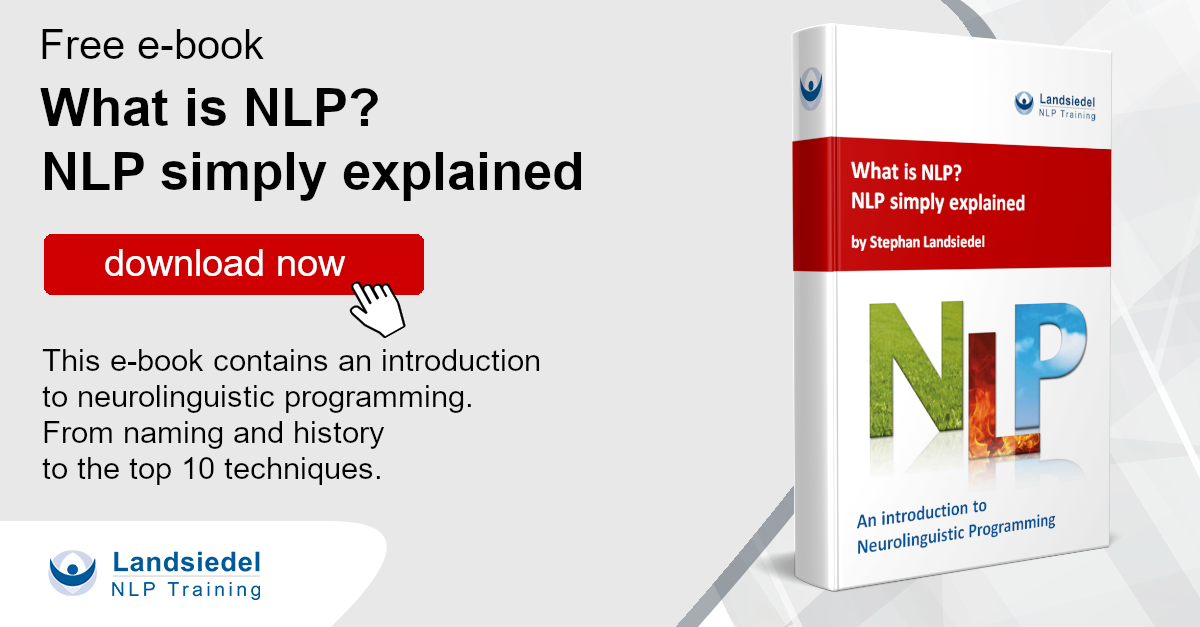Reframing

The ability to illuminate a behaviour or a situation from different perspectives makes our mind free and agile. Train your ability to see meaning in a flexible way and thus significantly increase your choices in difficult situations.
Contents
- Definition
- Assumptions
- Quotations
- A Reframing Story
- Where do reframings appear?
- Types of Reframing
- Separation of intention and behaviour
What is Reframing?
The term "Reframing", is derived from the word "frame". Reframing literally means to give things a new frame.
Reframing means:
To reinterpret something or place it in a different context in order to bring about a change in the experience of the person concerned through this change of meaning or perspective.
The meaning that an event, a statement, a behaviour, a belief that has a trigger, a stimulus, depends on the context, on the framework in which we place it, which we give it. Reframing means constructing a new frame, giving it a new meaning. A picture can look and feel completely different in a new frame. If a problem is reframed, then the same event gets a new meaning: new reactions and new behaviour become possible. Reframing is the process of reinterpreting, of taking up a new perspective, a new way of perception, a new interpretation.

Quotes on the Subject of Reframing
"It is not the things in themselves that worry us, but rather our interpretation of the meaning of these events that determines our reaction."
- Marc Aurel
"Always look at the light side of all things - and if they don't have a light one, rub the dark one until it shines."
- Nikolaus Enkelmann
Assumptions
Reframing is based on the following assumptions:
- Any behaviour is useful in any context.
- Each behaviour is attributed a meaning.
- Behind every behaviour there is a positive intention.
A Reframing Story
The farmer and the horse (Taken from the book "Reframing" by Bandler / Grinder)
A very old Chinese Tao story tells about a farmer in a poor village community. He was considered to be well off, because he owned a horse with which he ploughed and carried loads. One day his horse ran away. All his neighbours shouted how terrible it was, but the farmer just said, "who knows what it is good for". A few days later the horse returned and brought two wild horses with it. The neighbours were all happy about his favourable fate, but the farmer only said "who knows what it is good for". The next day the farmer's son tried to ride one of the wild horses; the horse threw him off and he broke a leg. The neighbours all conveyed their sympathy for this mishap to him, but the farmer said again, "who knows what it's good for".
The next week, recruitment officers came to the village to bring the young men into the army. They did not want the farmer's son because his leg was broken. When the neighbours told him how lucky he was, the farmer replied: "who knows what it's good for...".
▶ Reframings appear in:
- Jokes: Almost every joke works by placing events in a certain frame and then suddenly and drastically changing it. In jokes you take an object or a situation and suddenly put it in a different context or give it a different meaning. Example: What do Alexander the Great and Smokey the Bear have in common?
- Fables and Stories: E.g. Pinocchio (the long nose is only negative at first because he lies - but in the whale it allows escape because it keeps its mouth open).
- Creative Processes: An unusual event is seen in a new context and a great invention is created:
A man wakes up at night and feels the sharp end of a rusty spring of his old mattress drilling into his back. What possible use could an old mattress spring have? (Besides depriving him of sleep.) He reinterpreted it into a stylish egg cup and founded a successful company based on this idea. A friend of the physicist Donald Glaser pointed to a glass of beer and jokingly said: "Why don't they take this to catch their subatomic particles? Glaser looked at the bubbles that formed in the beer and went back to his laboratory to invent the "bubble chamber", similar to Wilson's cloud chamber, to determine the path of the particles in highly charged physics experiments.
For a sawmill the sawdust is waste - for a chipboard factory it is a raw material. The meaning of the sawdust is always the same (coarse wood dust, as it is produced when sawing boards and logs) but the context is different.
Anecdote by Henry Ford:
A young and talented employee had lost several hundred thousand dollars due to a management error and now had to answer to Henry Ford. He feared that he would probably be dismissed and said: "I am terribly sorry. I think you will probably fire me now." Henry Ford replied: "Are you kidding? I have just invested several hundred thousand dollars in your training and I am sure that this investment will pay off".

▶ Types of Reframing:
A distinction is made between two types of reframing:
Context Reframing:

Classifying an unwanted behaviour in a suitable context and finding a new, suitable behaviour for the previous "problem context".
"An example: A father calls his daughter stubborn. The therapist says: Imagine your daughter being molested by a man. Wouldn't it be very useful if she was stubborn then?"
The therapeutic purpose of this intervention is to help the father to develop a positive feeling for the rejected trait.
Contextual reframing is indicated when a comparison appears in the client's linguistic representation of the problem in the form "I am to X" or "He/She is to X". In this case there is a generalisation, because the rejected property is considered wrong in all conceivable contexts. By finding a context in which the trait is appropriate and useful, the therapist withdraws the generalisation and replaces it with a contextualised utterance." (from "The Dictionary of NLP" by Ötsch/Stahl)
Reframe: Find context in which X is useful.Reframing of Meaning (= Content Reframing):
finding a "more appropriate" meaning for the behaviour experienced as problematic = different perspective on the same phenomenon.
An example: A mother is annoyed by her children's footprints on the carpet. "Footprints on the carpet" means to her: "Nobody respects me." A new meaning could be: "Footprints on the carpet" has the meaning: "Dear people are in the house".
reframing of meaning is used when an utterance appears in the client's linguistic model that has the form of a complex equivalence: "I feel x when y happens" - can be mapped to: "x means that I must feel y." The client's linguistic model is then used to create a reframing of meaning. (from: The NLP dictionary of Ötsch/Stahl)
Reframe: "What if Y now means Z."
Separation of Intention and Behaviour
This is an important NLP principle. Often an intention can be very positive and good, but the behaviour with which the intention is to be realised is not. We can appreciate the positive intention and replace the behaviour.
At the heart of reframing lies the distinction between behaviour and intention: between what you actually do and what you actually try to achieve through that behaviour.
Examples:
- Behaviour:
A woman is constantly worried about her family. - Possible effect to the outside:
The family sees it as nagging and resents it. - View:
Her way of showing that she loves them and cares for them.
- Behaviour:
A man works a lot. - Possible effect to the outside:
The family has the impression that he does not care enough for them and wishes that he would spend more time with them. - View:
He loves the family and wants to earn more money for them.
The way to get rid of unwanted behaviour is not to try to stop it with willpower. This guarantees that it will continue because you give it attention and energy. Find another, better way to realize your intention. One that is more in tune with your whole personality. You do not destroy the gas lamps before you have installed electricity, unless you want to sit in the dark. (from Neurolinguistic Programming: "Successful Communication and Personal Development" by Joseph O'Connor and John Seymour)